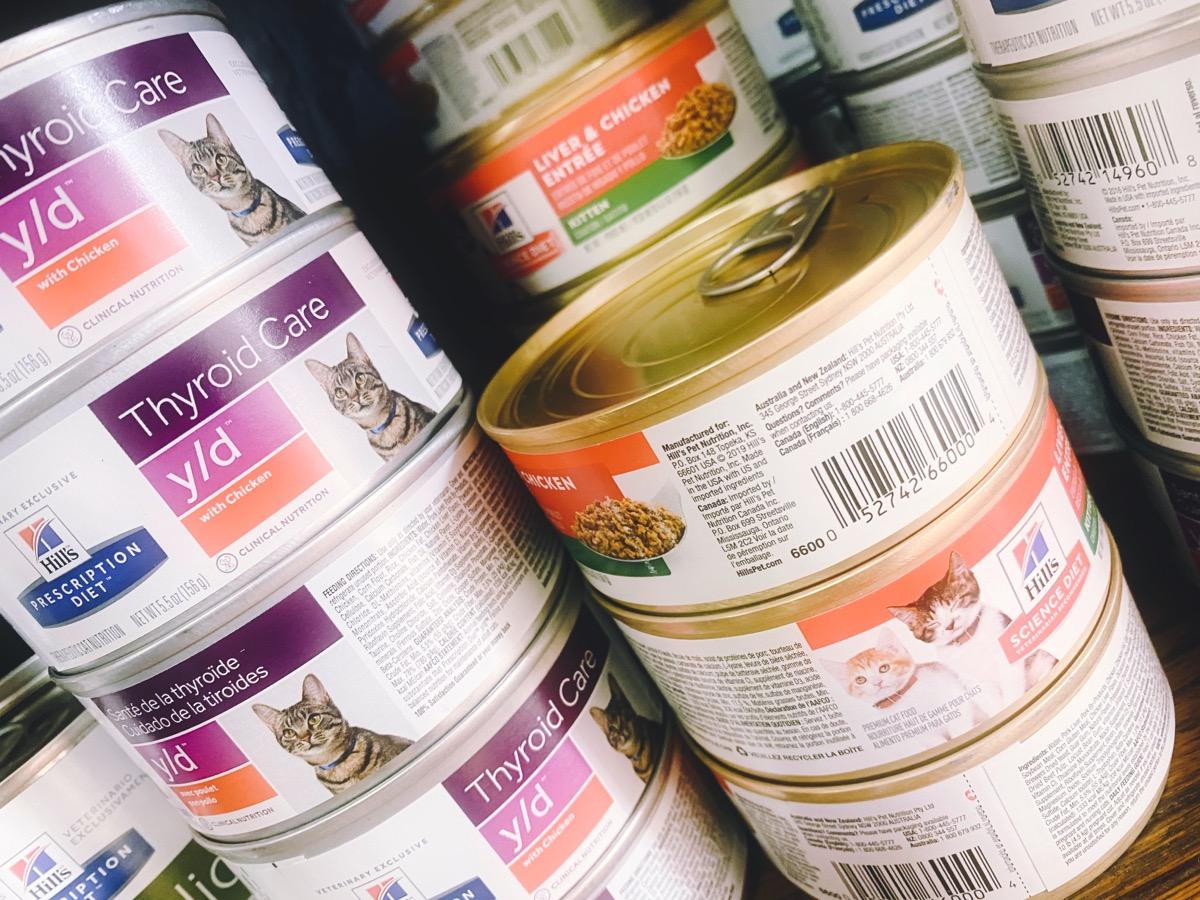
- posted: Nov. 17, 2020
Fact : Pet foods are a 29 billion dollar industry.
Manufacturers try every marketing ploy to garner you pet food dollars and many owners are passionate about what they feed their pets. There isn’t any one brand of pet food that is the best for your pet. Always pay attention to your pet’s overall health signs (coat, energy level, bowel movements, weight, etc) when choosing and potentially switching pet foods. It’s a jungle out there in pet food land but here are three things to keep in mind about pet food labels.
1. Guaranteed analysis really doesn’t tell you much about the quality of the food. Coal, old leather shoes, used motor oil, and water combined together, can give you a typical pet food guaranteed analysis.
2. The list of ingredients contained within the diet are listed by weight *before* the food is processed and the water is removed. Typically meats will weight more because they have a lot of water weight. But once processed, the ingredients may favor the other ingredients on the list, so also pay attention to the other ingredients on the list.
3. Finally the most important statement (for me at least) is the statement of nutritional adequacy. This identifies the life stage (growing, lactating, maintenance, senior) for which that the food was formulated. Pay attention if the word formulated is used or if animal feeding trials are used in this statement. **Formulated** means someone came up with a recipe and **feeding trials** mean you have the assurance that this food was digestible as fed to the test subjects and provided them with the required nutrition for their life stage. Feeding trials are the best method to determine how nutritious a food really is.
So if the statement reads “all life stages” you’ve got a puppy food, and that may be why you pet is gaining weight.
Keep these things in mind when looking at pet food labels, and you’ll be making more informed choices. If you do decide to switch diets, remember to do so gradually over 2-3 weeks.

